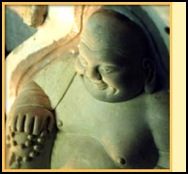Polyurethane
rubbers are two-component
systems (base plus curative; A+B) that cover a wide variety
of applications at a relatively low cost. They are
available for
making molds that are poured, brushed or sprayed onto a
model.

Advantages - polyurethanes are easy to use, with many
having a simple mix ratio by volume (i.e. 1A: 1B) – no
scale required. Flexible urethanes are available in a
wide hardness range from gel-like to harder than a car tire and
everything in between. Urethanes have relatively low viscosity
and “de-air” themselves – no vacuum degassing required.
Urethanes have good abrasion resistance and are used to cast
abrasive materials like concrete. They are less expensive than
silicones and polysulfides.
Disadvantages – As silicone rubber has the best release
properties, urethane rubber has the worst release properties
and will adhere to just about anything. Thorough
model preparation (we’ll cover this topic later) is essential
to successful mold making with urethane rubber. Urethanes
are moisture sensitive and may bubble if exposed to too much
moisture (making molds outside on a very humid day, for example).
Limited shelf life after opening – remaining product may
be affected by ambient moisture in the air. (Smooth-On makes a
product called “Xtend-Ittm” that greatly extends the shelf life of
unused urethanes).
Perma-Flex proudly distributes Smooth-On Urethane Liquid Rubber



